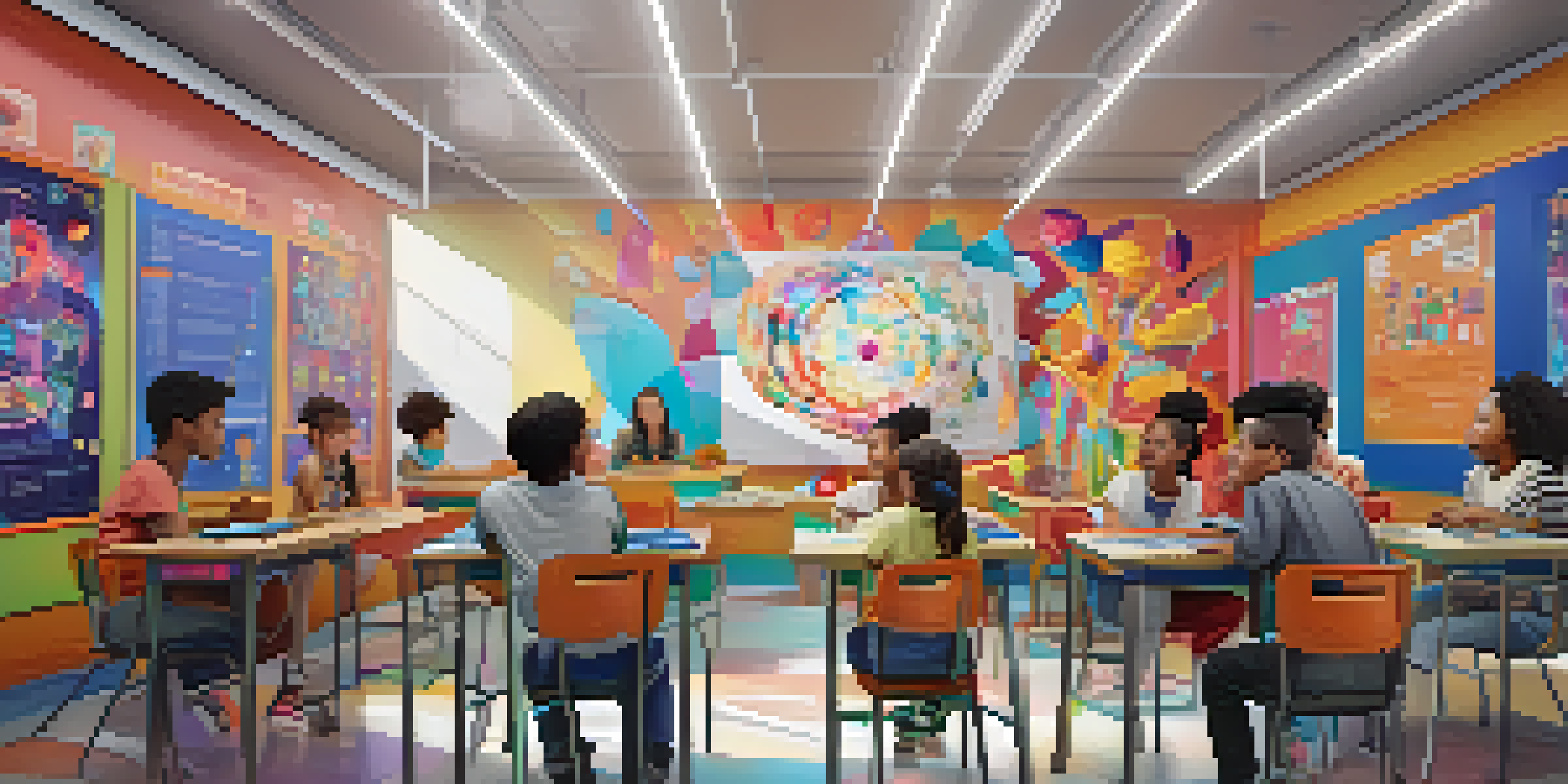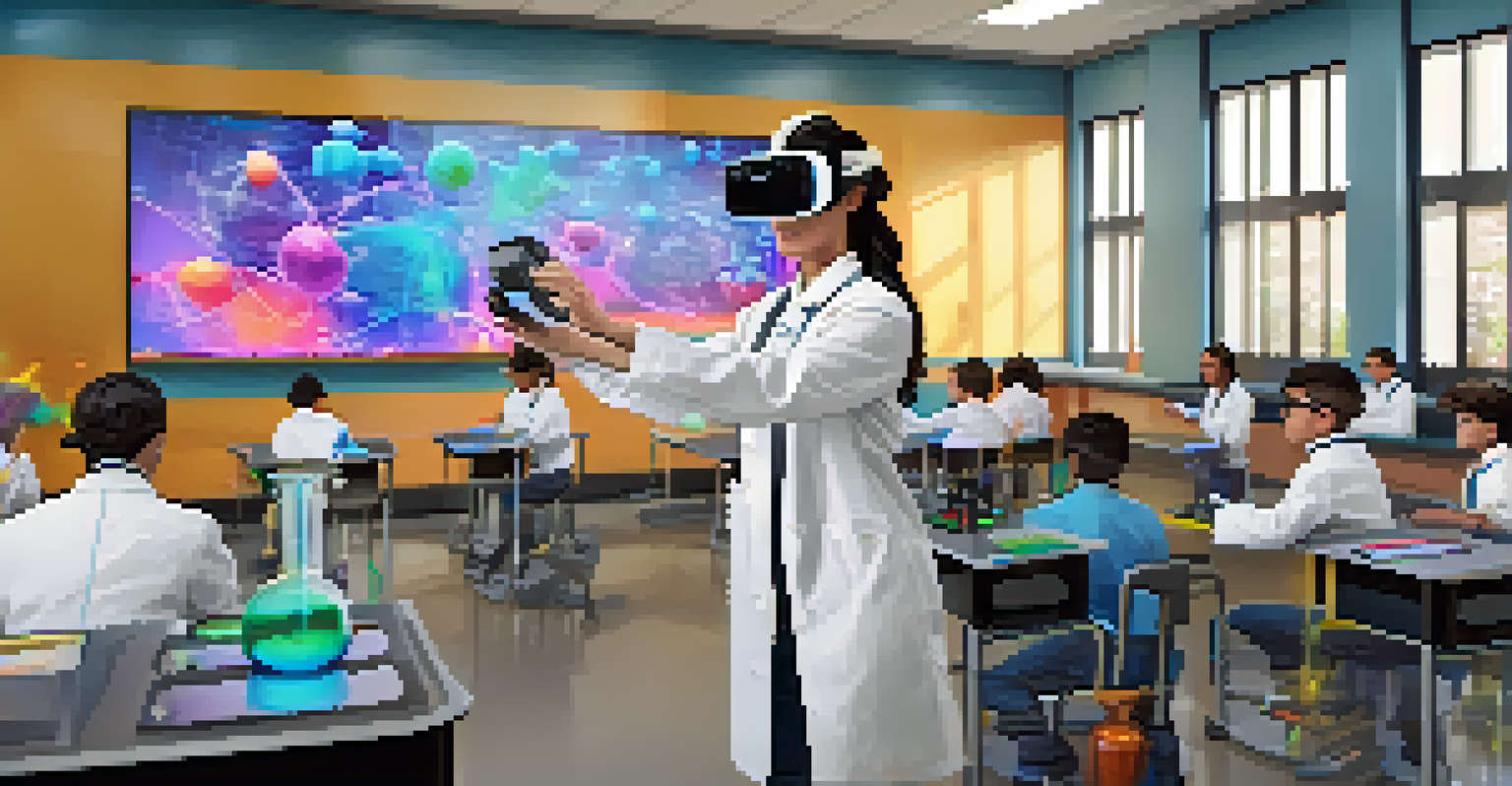The Impact of VR on Learning Outcomes in Educational Settings

Understanding Virtual Reality in Education
Virtual reality (VR) immerses users in a simulated environment, allowing them to interact with digital spaces as if they were real. In educational settings, this technology can transform the way students engage with content, making learning more dynamic and interactive. By stepping into a virtual world, students can visualize complex subjects, such as anatomy or history, in ways that traditional textbooks cannot offer.
Virtual reality is the first step in a grand adventure into the landscape of the imagination.
For instance, imagine a biology class where students can explore the human body from the inside, observing organs and systems in 3D. This hands-on experience not only enhances understanding but also retains students' interest and motivates them to learn more. Furthermore, VR can cater to different learning styles, ensuring that visual, auditory, and kinesthetic learners all have an opportunity to thrive.
As educators continue to explore VR's potential, it's clear that this technology offers a unique method of instruction that can complement traditional teaching methods. The possibilities presented by VR in education are not just enhancements; they could redefine what it means to learn effectively.
Enhancing Engagement and Motivation
One of the most significant impacts of VR in education is its ability to boost student engagement. When students interact with immersive content, they become active participants in their learning journey, which can lead to better retention of information. For example, a history lesson that transports students to ancient Rome can spark curiosity and excitement that a lecture simply cannot achieve.

Moreover, VR experiences often provide a sense of adventure that makes learning feel less like a chore and more like an exploration. Students are more likely to engage with the material when they feel like they are part of the story. This increased motivation can lead to improved academic performance, fostering a love for learning that can last a lifetime.
In addition to engagement, VR can help students develop crucial skills like problem-solving and teamwork. Many VR applications require collaboration, encouraging students to communicate and work together to achieve common goals, which mirrors real-life scenarios.
Bridging the Gap for Diverse Learners
Virtual reality has the potential to create inclusive learning experiences for students with diverse needs. For instance, VR can help students with learning disabilities by providing tailored environments that cater to their unique challenges. By offering a variety of simulations, educators can support different learning paces and styles, ensuring that everyone has access to quality education.
Education is not the filling of a pail, but the lighting of a fire.
Additionally, VR can bridge language barriers in multicultural classrooms. Students can immerse themselves in scenarios that teach language skills in context, making it easier to grasp new vocabulary and phrases. This contextual learning fosters a deeper understanding, which can be especially beneficial for English language learners.
The adaptability of VR means that educators can design experiences that resonate with various cultural backgrounds, making learning more relatable and effective. By embracing this technology, schools can create a more equitable educational landscape for all students.
Improving Knowledge Retention Rates
Research has shown that immersive learning experiences can significantly enhance knowledge retention rates. When students engage with material in a hands-on manner, they are more likely to remember what they've learned long after the lesson is over. VR creates memorable experiences that stick in the mind, as opposed to passive learning methods.
For example, a student who participates in a virtual chemistry lab may find it easier to recall chemical reactions and safety protocols than if they simply read about them in a textbook. The act of performing experiments in a virtual space solidifies their understanding through practical application.
Moreover, the emotional engagement that VR fosters can lead to stronger memory formation. When students feel excited or challenged within a virtual environment, those emotions can enhance their ability to recall information later, making learning not just effective but also enjoyable.
Facilitating Real-World Applications
Virtual reality offers students the chance to apply their knowledge in real-world scenarios without any of the associated risks. For example, medical students can practice surgery in a simulated environment, honing their skills before performing on actual patients. This hands-on experience is invaluable, as it builds confidence and competence.
Similarly, VR can prepare students for various careers by providing realistic job simulations. From virtual internships to role-playing exercises, learners can gain practical experience that is often difficult to replicate in traditional classroom settings. This exposure not only enhances their skill set but also makes them more appealing to future employers.
By bridging the gap between theory and practice, VR empowers students to see the relevance of their studies in everyday life. This connection can inspire them to pursue their goals with greater clarity and ambition.
Addressing Challenges in VR Implementation
While the benefits of VR in education are compelling, there are also challenges that educators must navigate. The cost of VR equipment and software can be prohibitive for some schools, leading to disparities in access to this technology. Additionally, teachers may require training to effectively integrate VR into their curriculum, which can be a barrier to implementation.
Moreover, there is the concern of potential over-reliance on technology, which can detract from essential interpersonal skills and traditional learning methods. Striking a balance between VR and other teaching strategies is crucial to ensure that students receive a well-rounded education.
Despite these challenges, many educational institutions are finding innovative solutions to incorporate VR into their programs. By collaborating with tech companies and seeking grants, schools can enhance their offerings while preparing students for a tech-driven future.
The Future of VR in Education
Looking ahead, the future of VR in education appears bright, with ongoing advancements in technology poised to enhance learning outcomes further. As VR becomes more accessible and affordable, we can expect to see its integration into various subjects and grade levels. This widespread adoption will likely lead to even more innovative applications that cater to the diverse needs of students.
Furthermore, as educators and technologists collaborate, we may witness the development of custom VR content tailored to specific curricula. This personalized approach can make learning even more engaging and relevant, ensuring that students are not just passive consumers of information, but active participants in their educational journeys.

Ultimately, the evolution of VR in education has the potential to transform classrooms into vibrant, interactive learning hubs. By embracing this technology, we can create an educational landscape that fosters curiosity, creativity, and lifelong learning.